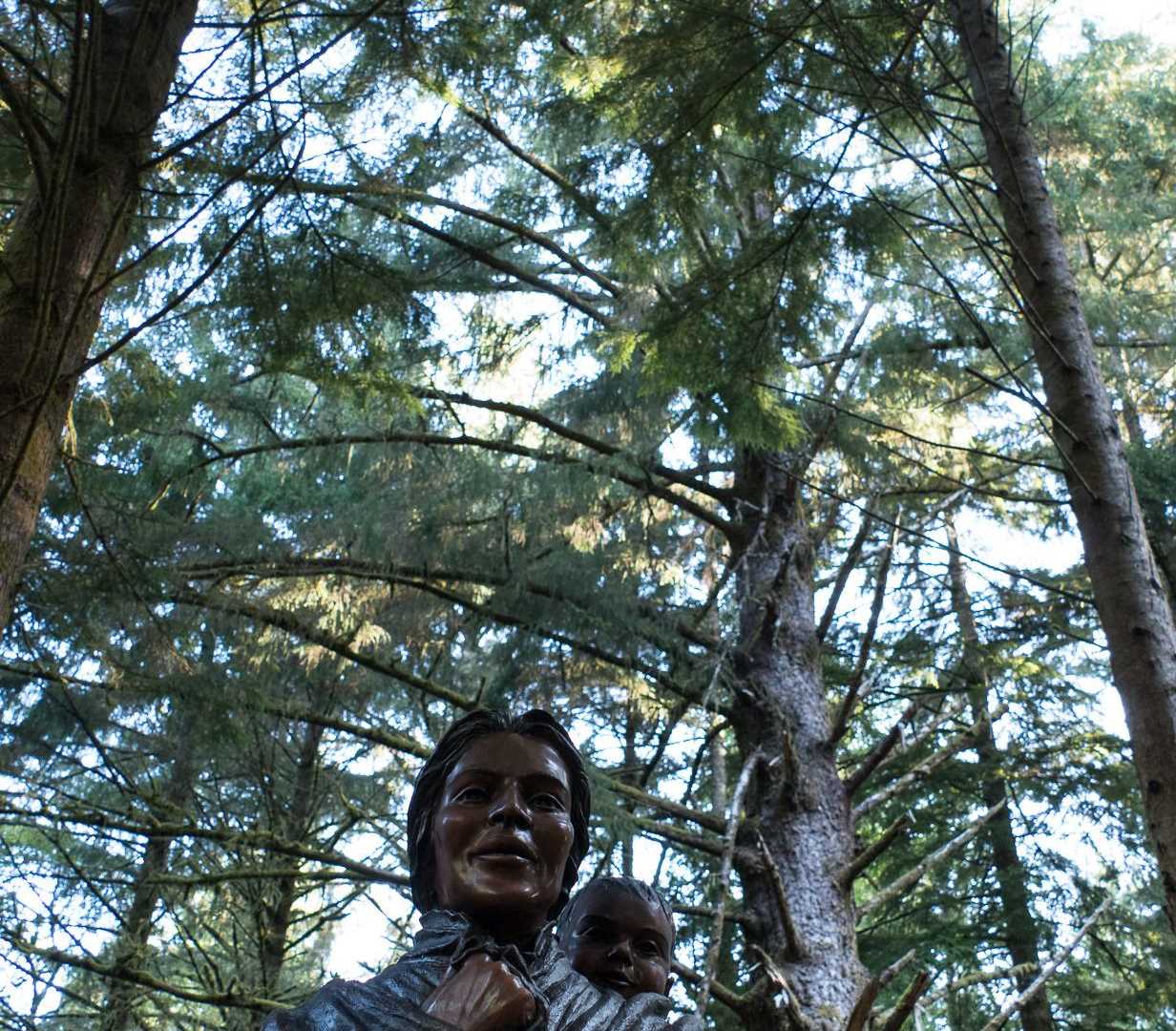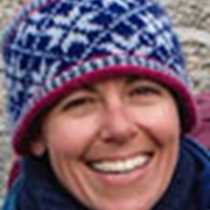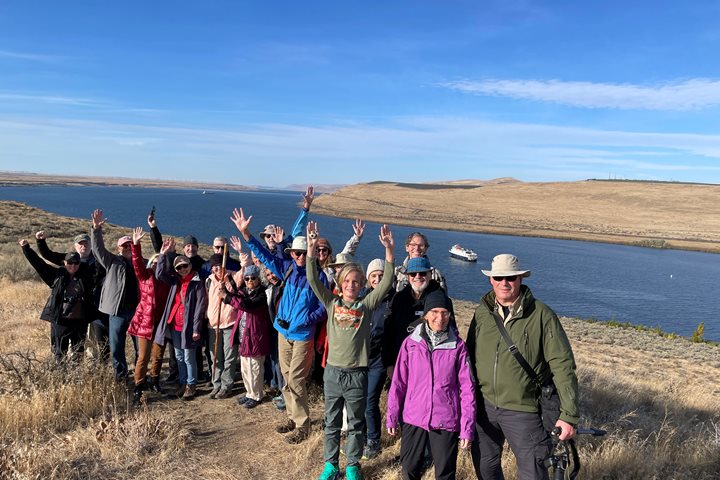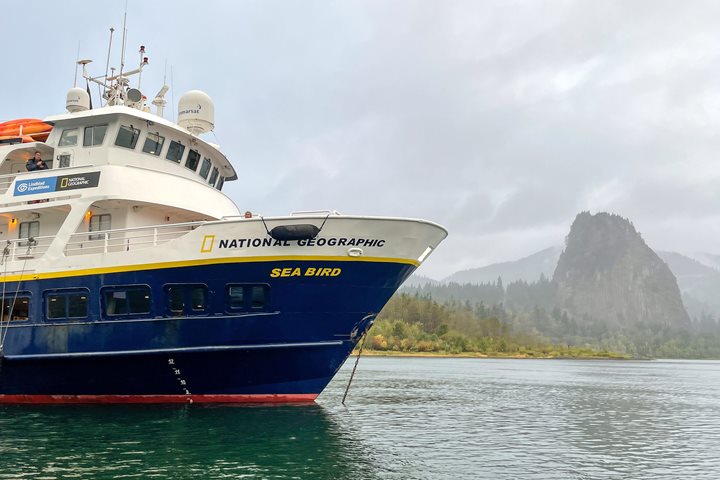The seaside, working town of Astoria, Oregon has an average annual rainfall of 67 inches. Today, was a wonderfully atypical day – filled with glorious sunshine and blue skies.
We started the day with sunrise at the Columbia River Bar, a shallow, sandy area where we experienced just a small taste of the force of the 1700 mile river’s powerful flow meeting the Pacific Ocean. Today’s slight swell was minuscule compared to the 40 foot waves that can occur at this spot during winter storms.
During breakfast, the National Geographic Sea Lion docked at the working dock in Astoria where coaches were staged to bring us to Fort Clatsop, the Corps of Discovery’s winter camp in 1905 – 1906. The wooden fort is a replica of the original – based on the detailed drawings from William Clark’s journals but with detailed (and humorous) descriptions from our National Park Service Ranger, Bill, we could imagine the dismal, dreary, unhygienic and downright horrible conditions that the 33 members of Lewis and Clark’s expedition had to withstand. Most of us agreed with expedition leader, Larylou Blakeslee that even one winter night spent in the vastly improved replica would be one night too many.
The fort is set in a beautiful temperate rainforest amongst towering and impressive Sitka spruce, Western hemlock and Douglas fir trees and many of us followed the forest trail to the original location where the Corps of Discovery hauled their canoes out of the river.
From Fort Clatsop, we returned to Astoria for a visit to the outstanding Columbia River Maritime Museum. There is much to admire about this collection but what really impressed me was the story of the Lightship Columbia, a series of vessels set out at the mouth of the Columbia River to provide protection (in the form of lights and fog horns) for all ship traffic. Not only did we get to climb aboard the last ship that performed this very dangerous service, but we received an excellent presentation by Museum Staff on the mostly boring but occasionally dangerous life aboard one of these special vessels.
After lunch, most of our group visited Cape Disappointment at the Lewis and Clark Interpretive Center. After refreshing ourselves on the expedition history, we took a walk down to Waikiki Beach, which was experiencing very low tide.
The wide expanse of beach allowed for plenty of room to stroll and enjoy the views back to the enormous piles of driftwood and the pillow lava in the basalt cliffs surrounding us. Though I could have lingered for several more hours in this beautifully scenic setting, it was time to head back to our ship for cocktails and Recap under a swiftly setting sun.







